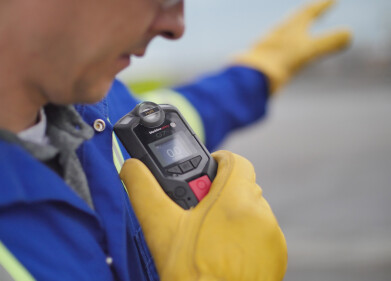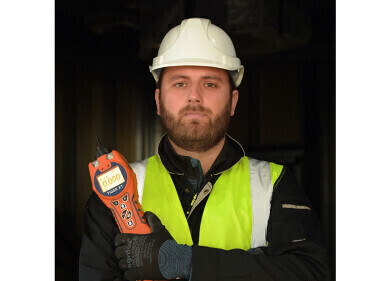Personal gas monitor
1,4-dioxane: is stricter regulation imminent?
Nov 28 2024
1,4-dioxane, a chemical historically utilized in industrial and consumer applications, is increasingly recognized as an environmental and public health threat.
Once valued for its role as a solvent and stabilizer, the chemical’s persistence in the environment and its association with carcinogenic risks have prompted regulatory actions worldwide.
However, the approaches taken by different jurisdictions highlight the complexities of managing such risks and reveal the evolving understanding of its impact.
What is 1,4-dioxane?
1,4-Dioxane is a synthetic ether that often arises as a byproduct in the production of surfactants and plastics. It can contaminate products such as detergents, cosmetics, and personal care items at trace levels.
Though its intentional use has diminished, its role as an unintended contaminant makes it particularly problematic, especially in water systems where it resists degradation.
Additionally, its miscibility in water and resistance to standard treatment processes amplify its environmental persistence, making it a widespread contaminant in groundwater and drinking water supplies.
How is 1,4-dioxane regulated?
Efforts to regulate 1,4-dioxane vary significantly across jurisdictions, reflecting differences in legal frameworks, scientific understanding, and risk tolerance.
The chemical’s classification as a probable human carcinogen by agencies like the U.S. Environmental Protection Agency (EPA) and the European Chemicals Agency (ECHA) is based on evidence from animal studies showing liver and kidney damage, along with tumor formation.
In the United States, the EPA has included 1,4-dioxane under its Unregulated Contaminant Monitoring Rule (UCMR) to gather data on its presence in drinking water systems. While there is no federal standard, states like New York have implemented stringent limits, with a cap of 1 part per billion (ppb) in drinking water—one of the most rigorous standards globally. The Toxic Substances Control Act (TSCA) also enables the EPA to evaluate and potentially restrict the chemical’s use in industrial applications.
Globally, other nations have also addressed the chemical’s risks. Japan and Canada have focused on reducing industrial discharges and limiting its presence in consumer products, while the World Health Organization (WHO) has included 1,4-dioxane in its drinking water quality guidelines, advocating for enhanced monitoring and remediation measures.
Does the EU regulate 1,4-dioxane?
In the European Union, 1,4-dioxane has been classified as a Substance of Very High Concern (SVHC) under the REACH framework, highlighting its carcinogenic risks and environmental persistence.
This designation imposes strict control measures, requiring companies to disclose its presence in products if it exceeds threshold levels. Recent guidance from the Scientific Committee on Consumer Safety (SCCS) recommended limiting 1,4-dioxane in cosmetics to below 10 ppm to minimize consumer exposure, reflecting a strong precautionary approach.
The United Kingdom, having retained elements of the EU regulatory framework post-Brexit, is conducting a Regulatory Management Options Analysis (RMOA) for 1,4-dioxane. This assessment aims to determine the most effective measures to mitigate risks, informed by stakeholder input on manufacturing, usage, and contamination control practices.
Challenges of regulating 1,4-dioxane
The management of 1,4-dioxane presents unique challenges. Its formation as an unintended byproduct complicates efforts to eliminate it entirely.
For instance, ethoxylated surfactants, which generate trace amounts of 1,4-dioxane during synthesis, are widely used in industrial and consumer applications.
Phasing out these products or modifying production processes would require significant economic and technical investments.
How can we better regulate 1,4-dioxane?
To address these challenges, regulatory bodies are promoting process optimization as a way to reduce residual 1,4-dioxane in products. Improved manufacturing practices, such as vacuum stripping, can help minimize contamination.
At the same time, efforts are underway to develop safer substitutes for ethoxylated compounds, with industry and academia leading research into alternative materials.
Enhanced monitoring techniques, including advanced analytical methods, allow for more accurate detection of trace 1,4-dioxane and ensure compliance with increasingly stringent regulatory limits.
Digital Edition
PIN 26.1 Feb/Mar 2025
March 2025
Analytical Instrumentation - Elemental Analysis for Quality and Process Control at Refineries, for Lubricants and Wear Metals in Engine Oils - Synthetic Lubricants: New Developments - Scaling...
View all digital editions
Events
Apr 15 2025 Moscow, Russia
Apr 22 2025 Hammamet, Tunisia
Apr 22 2025 Kintex, South Korea
Solar & Energy Storage Summit 2025
Apr 23 2025 Denver, CO, USA
Apr 27 2025 Portland, OR, USA



















